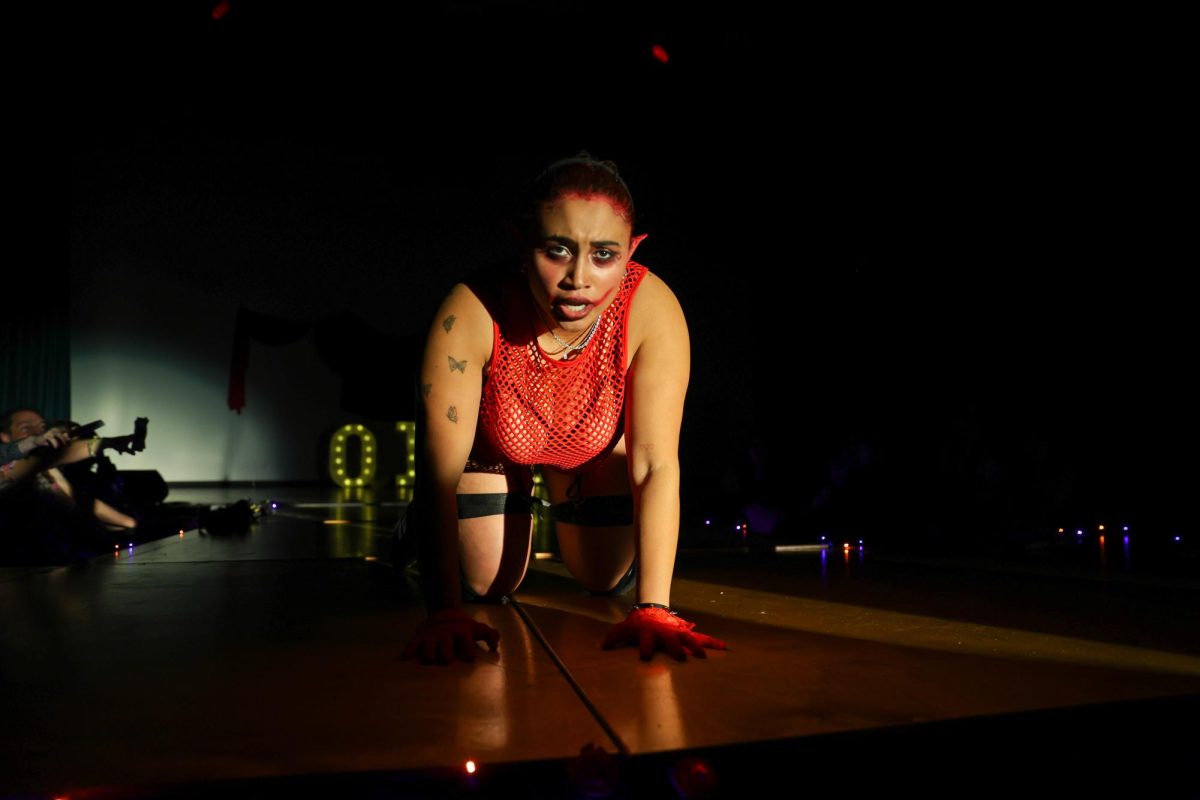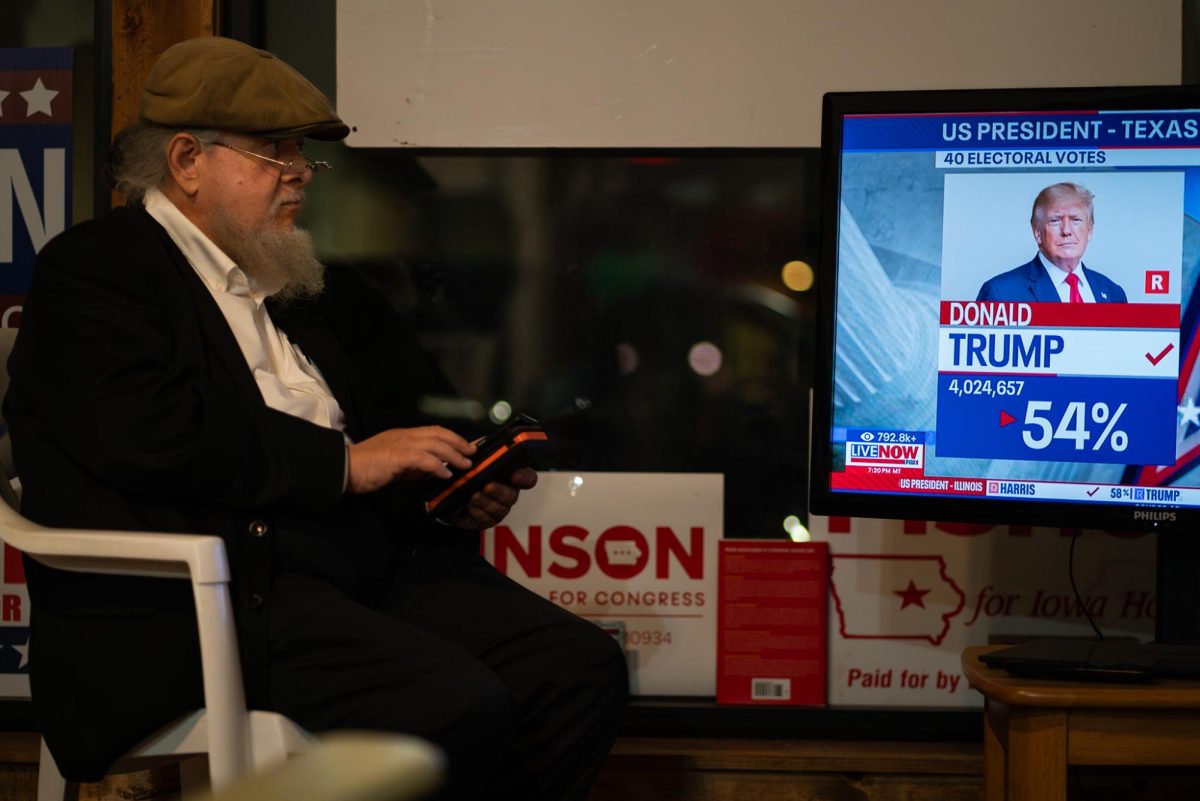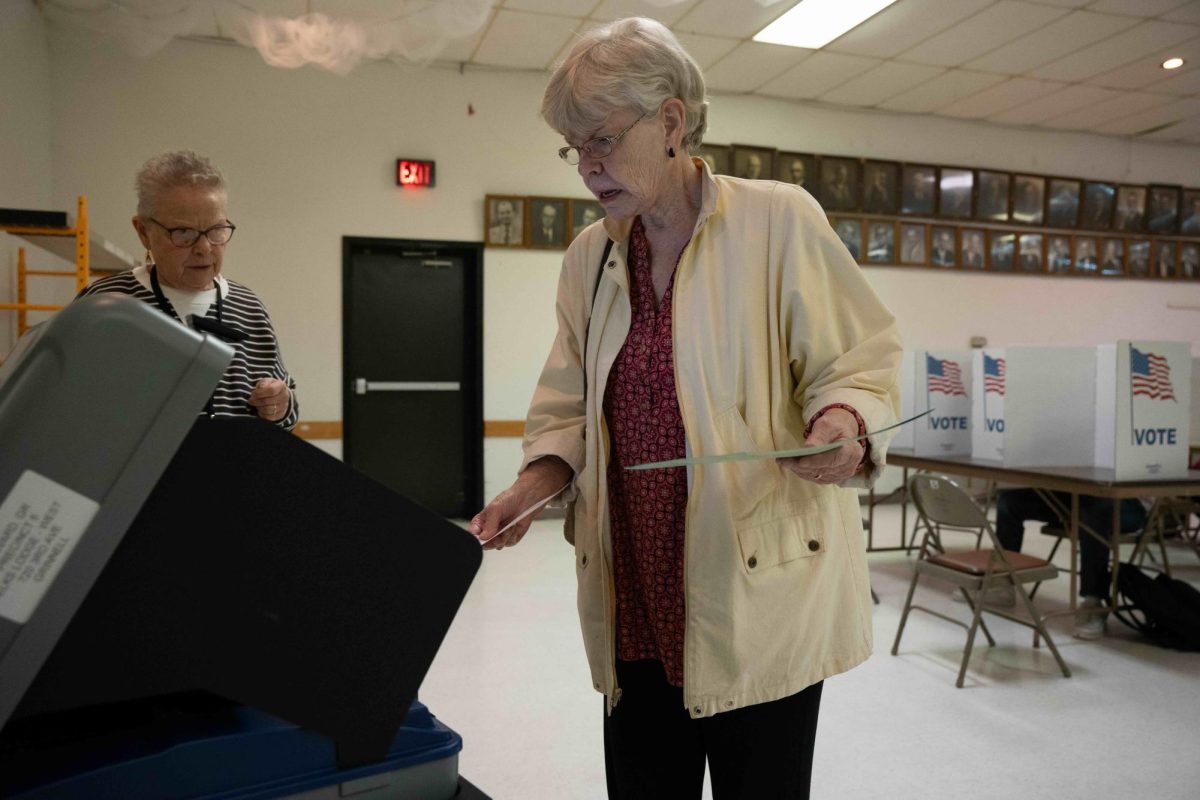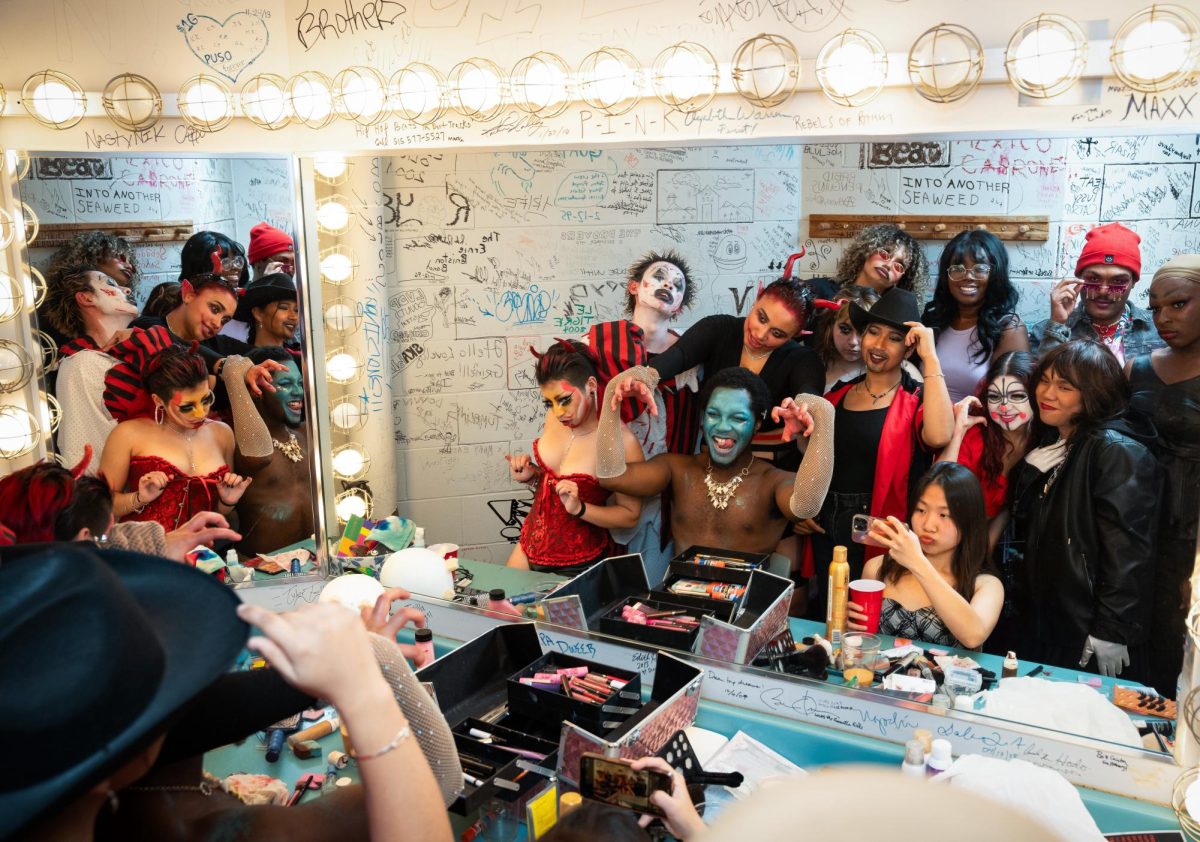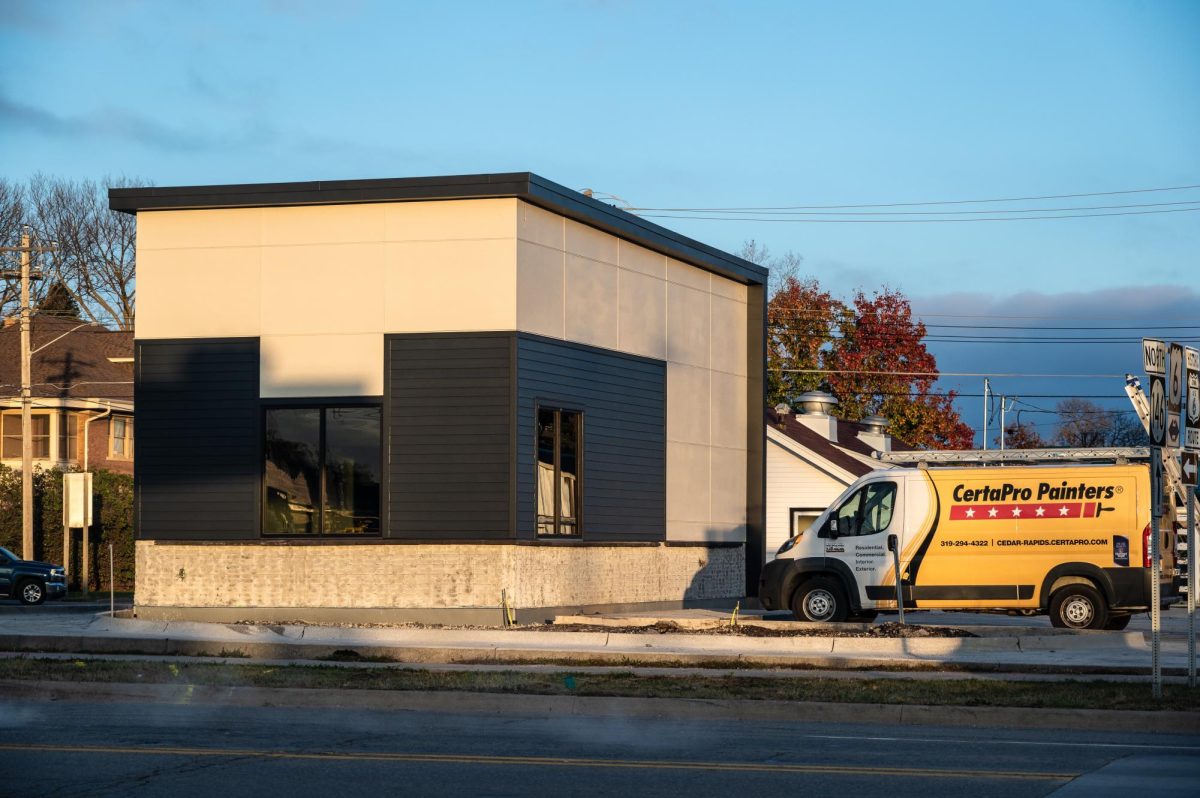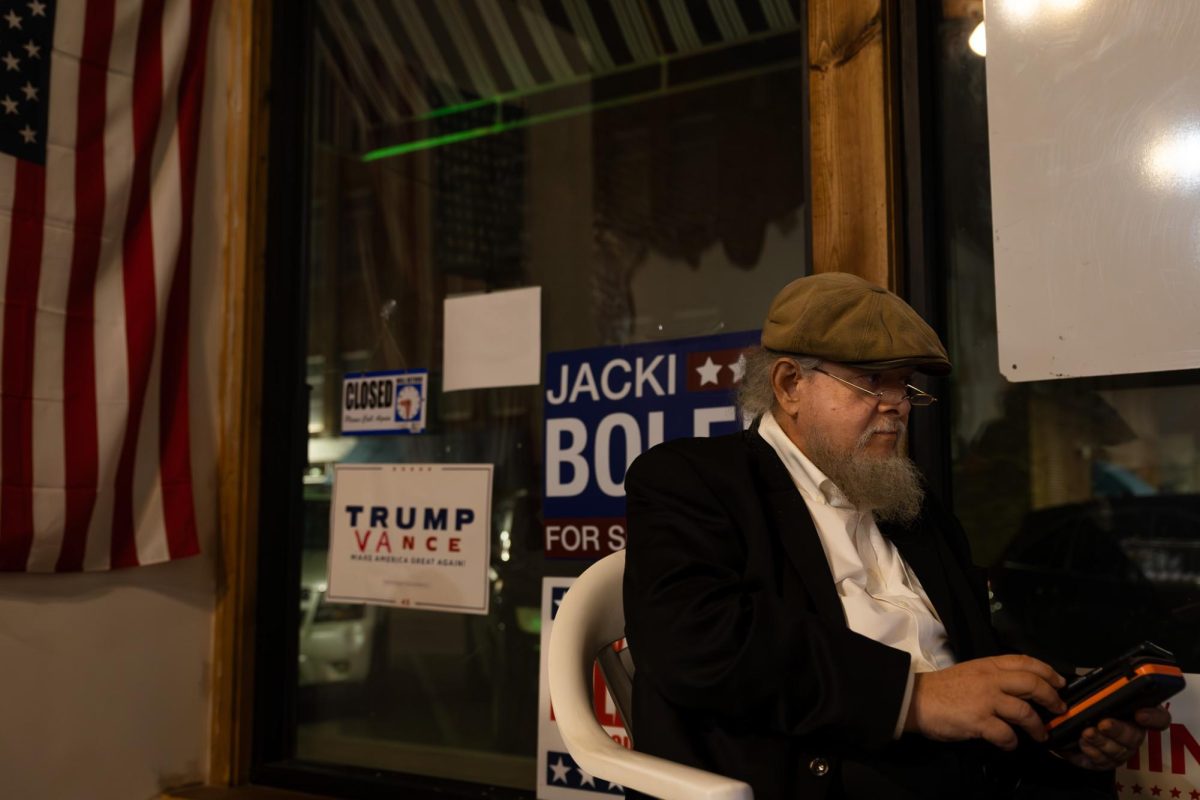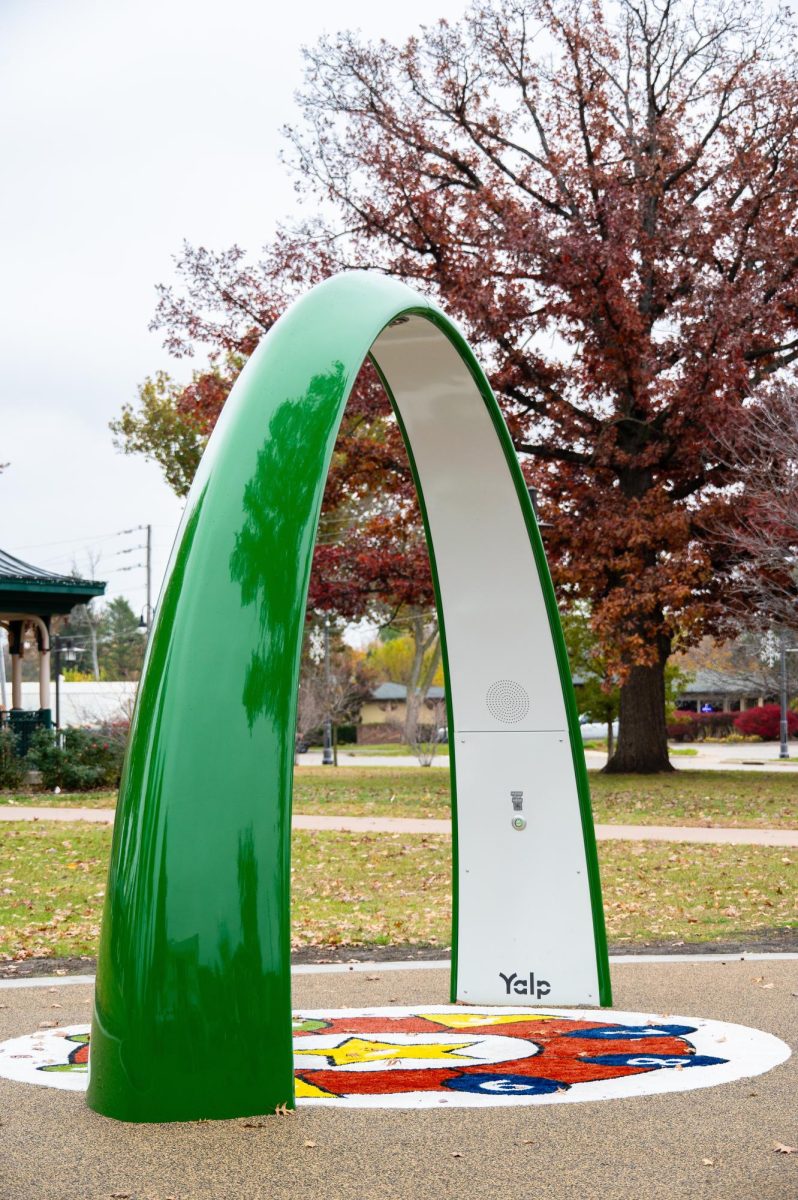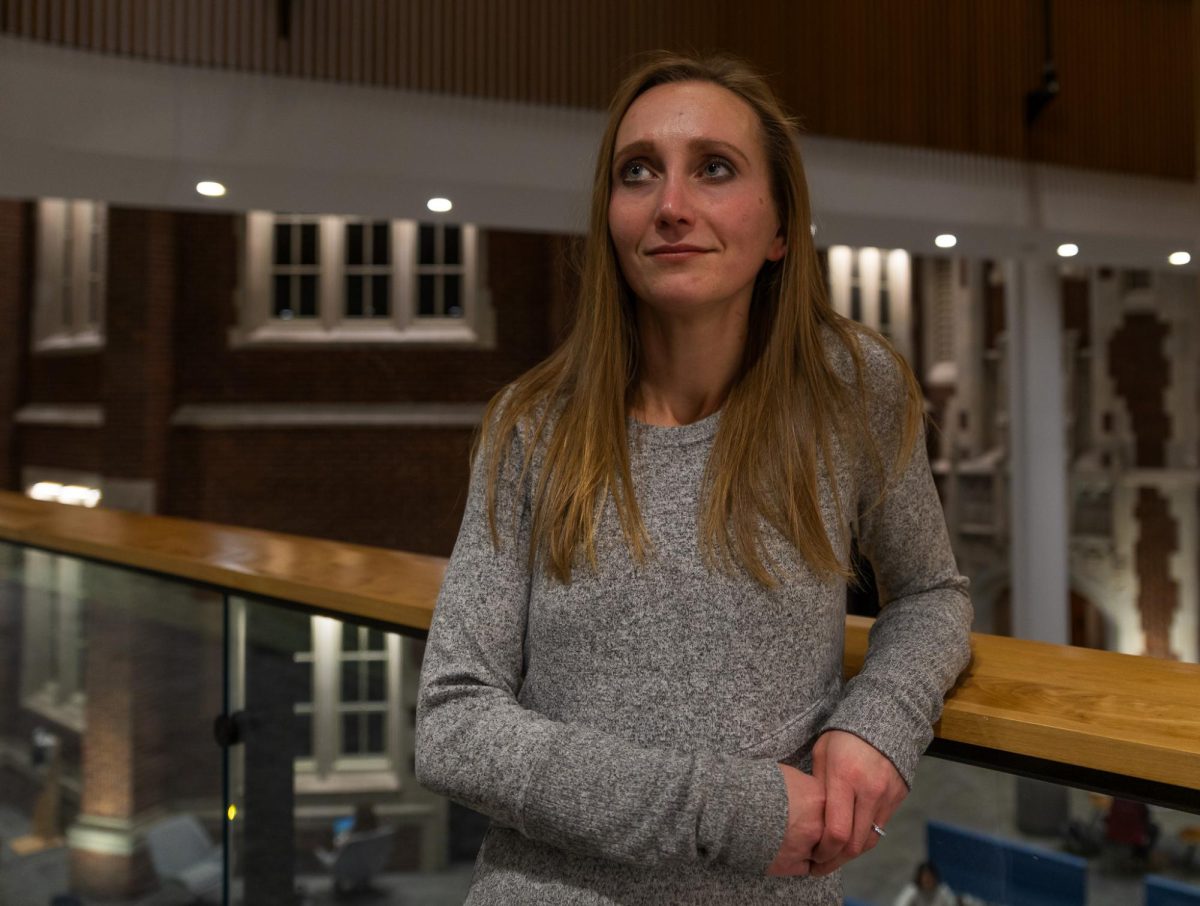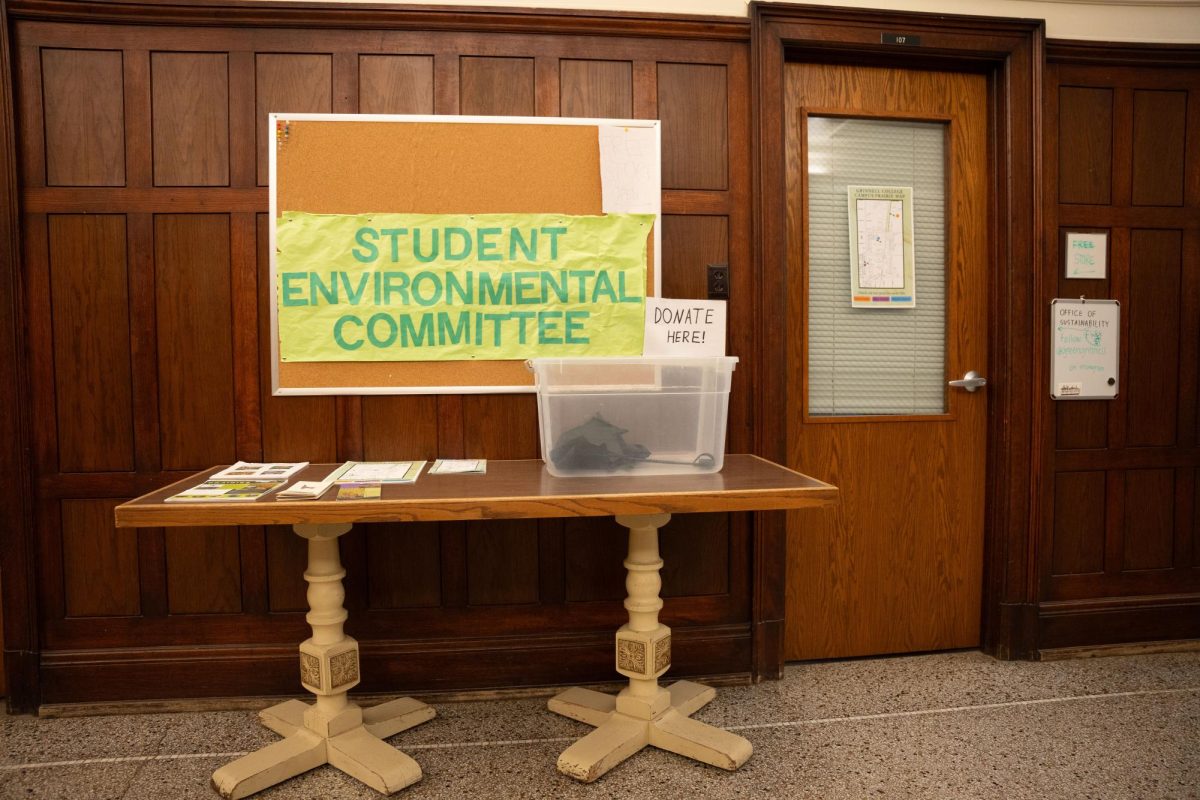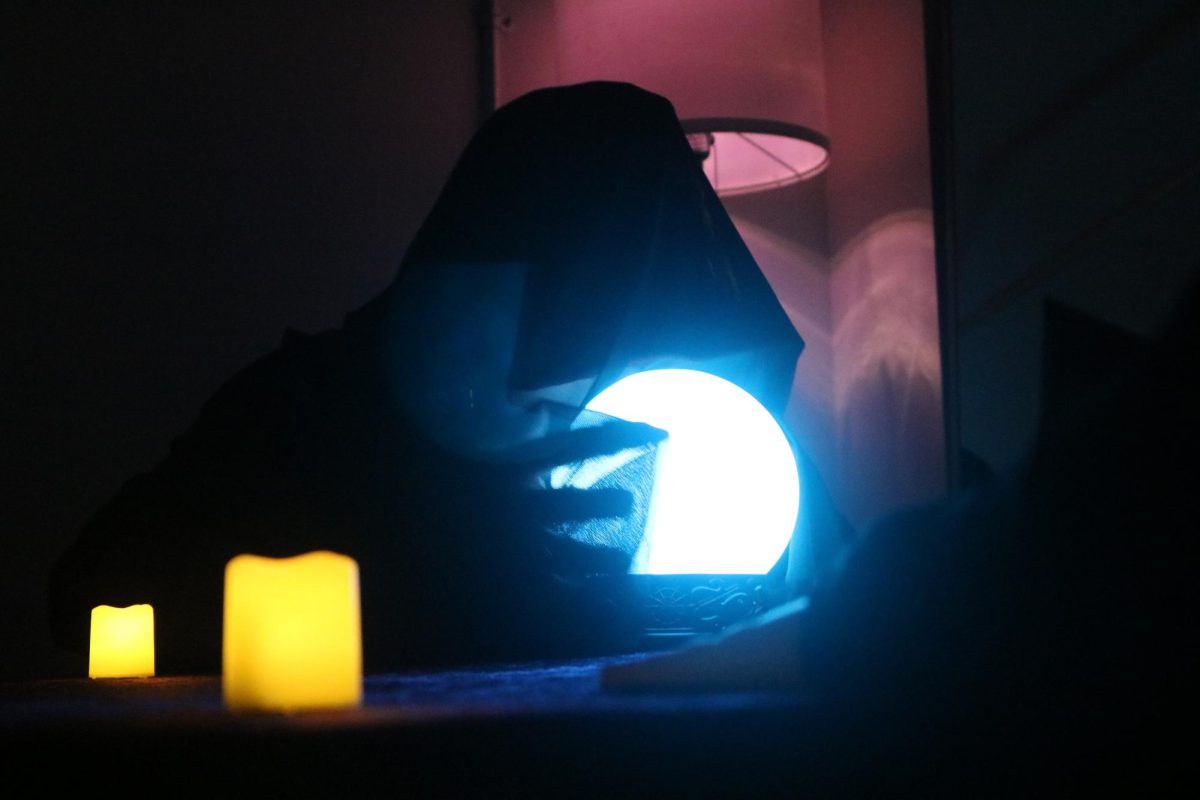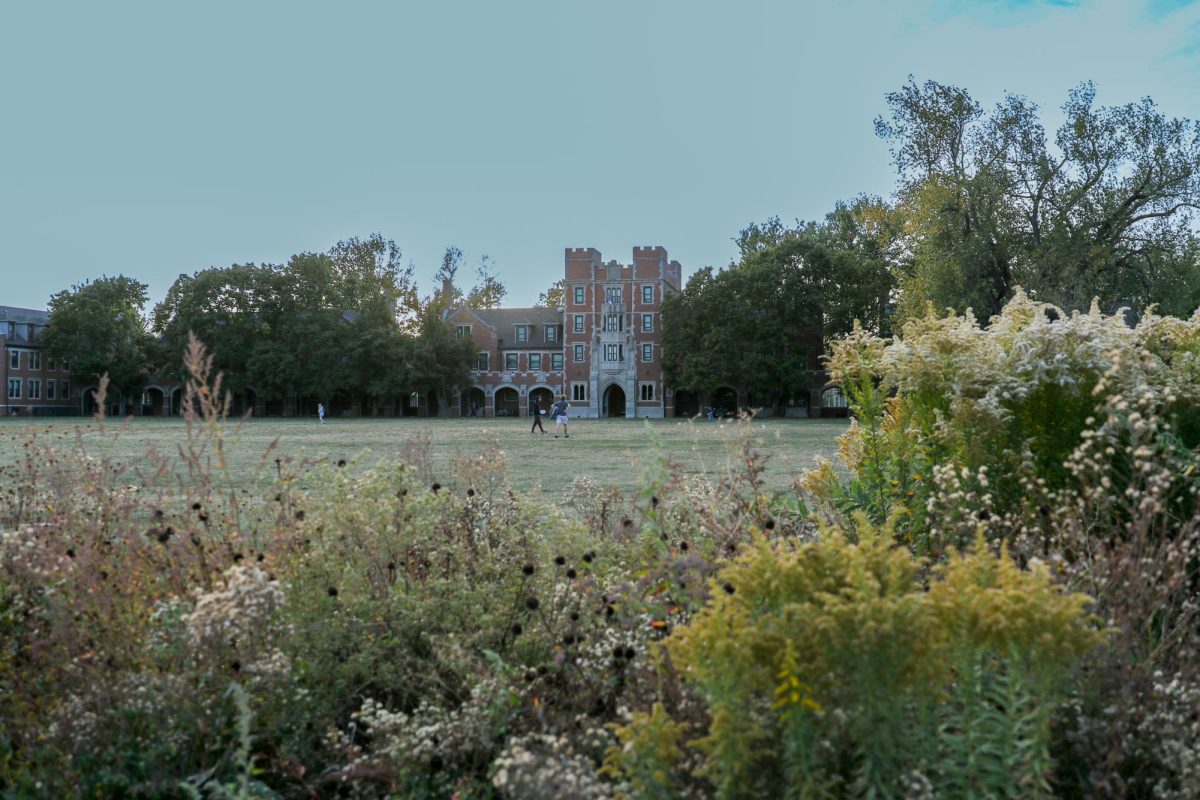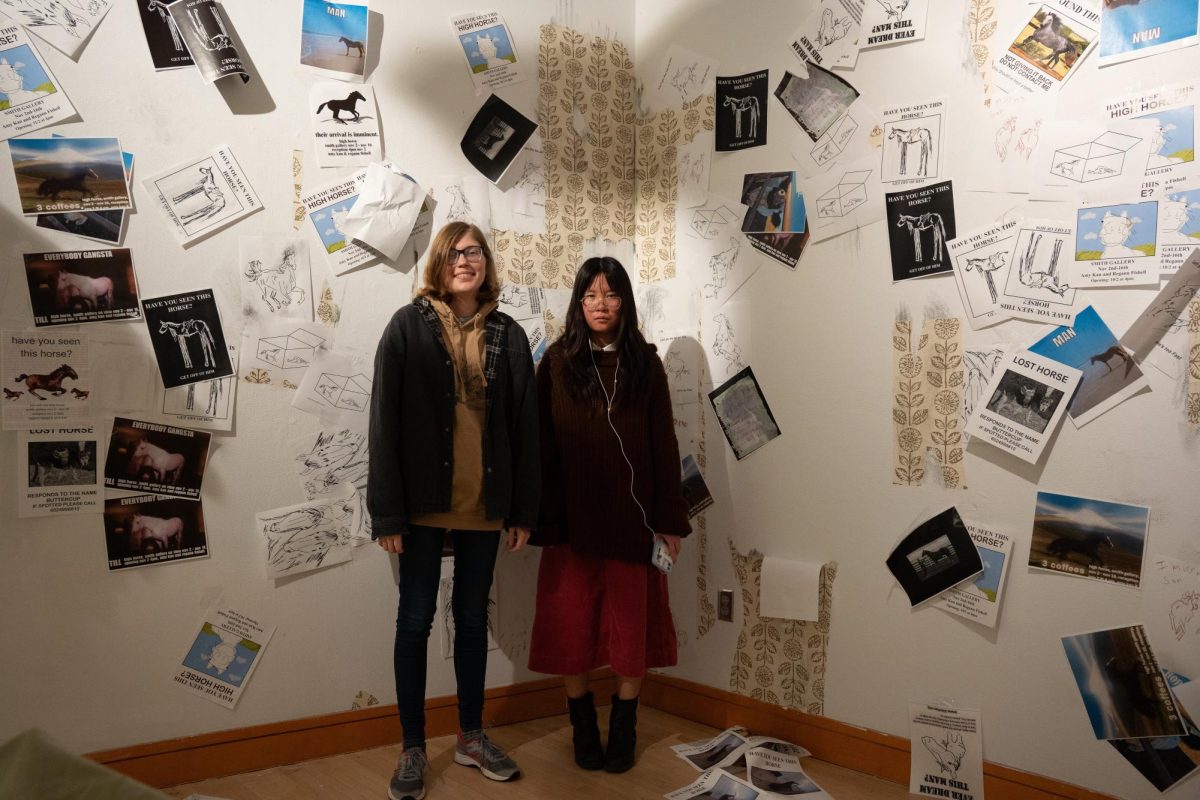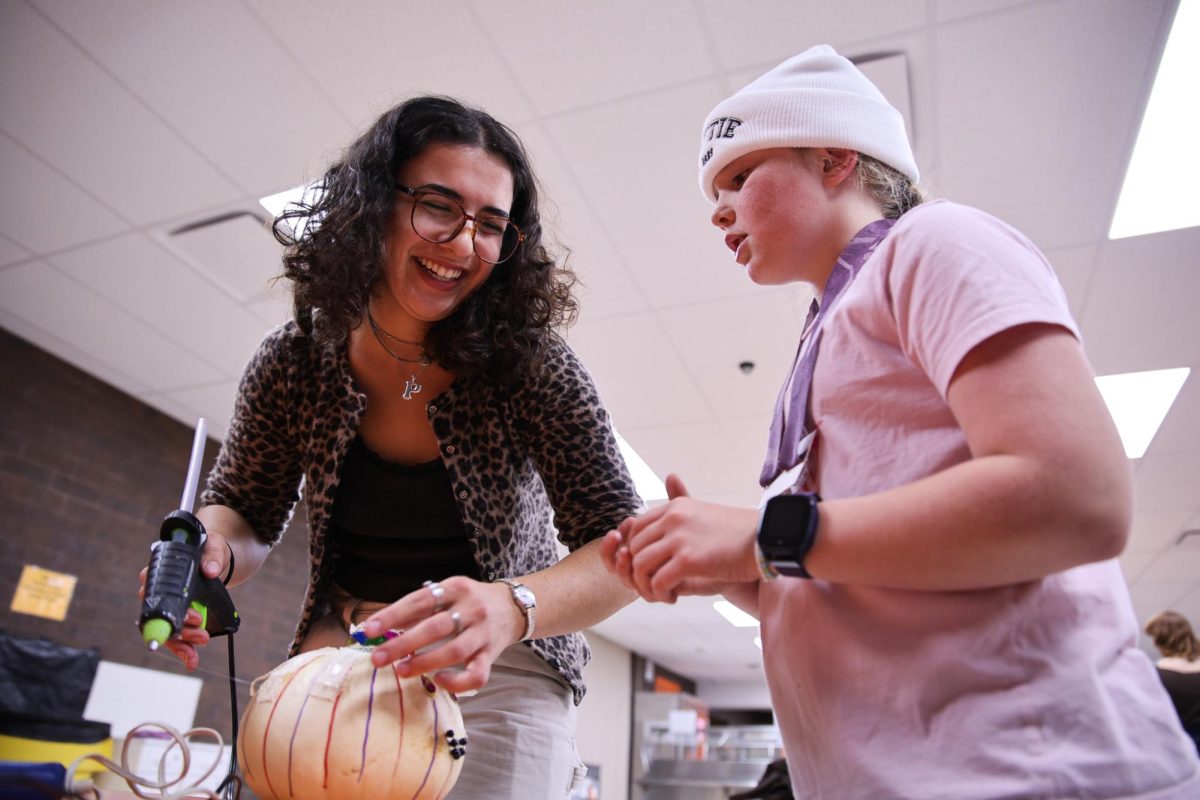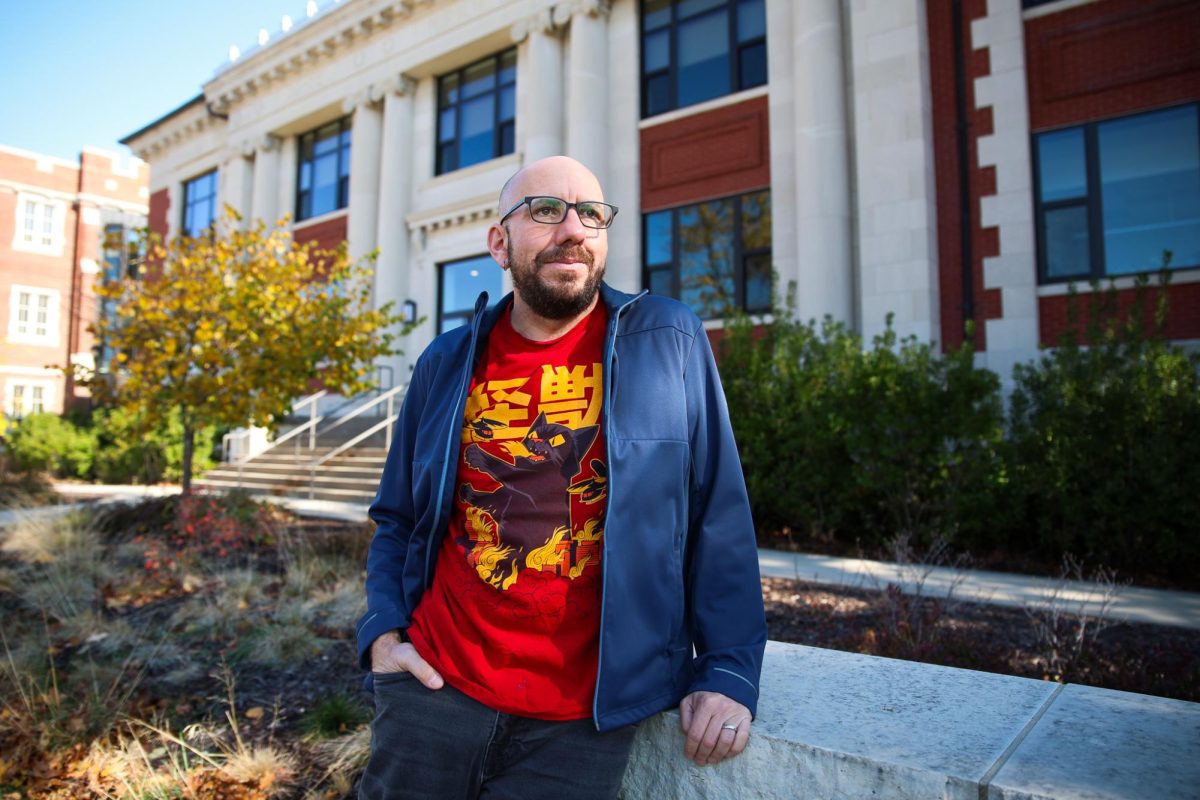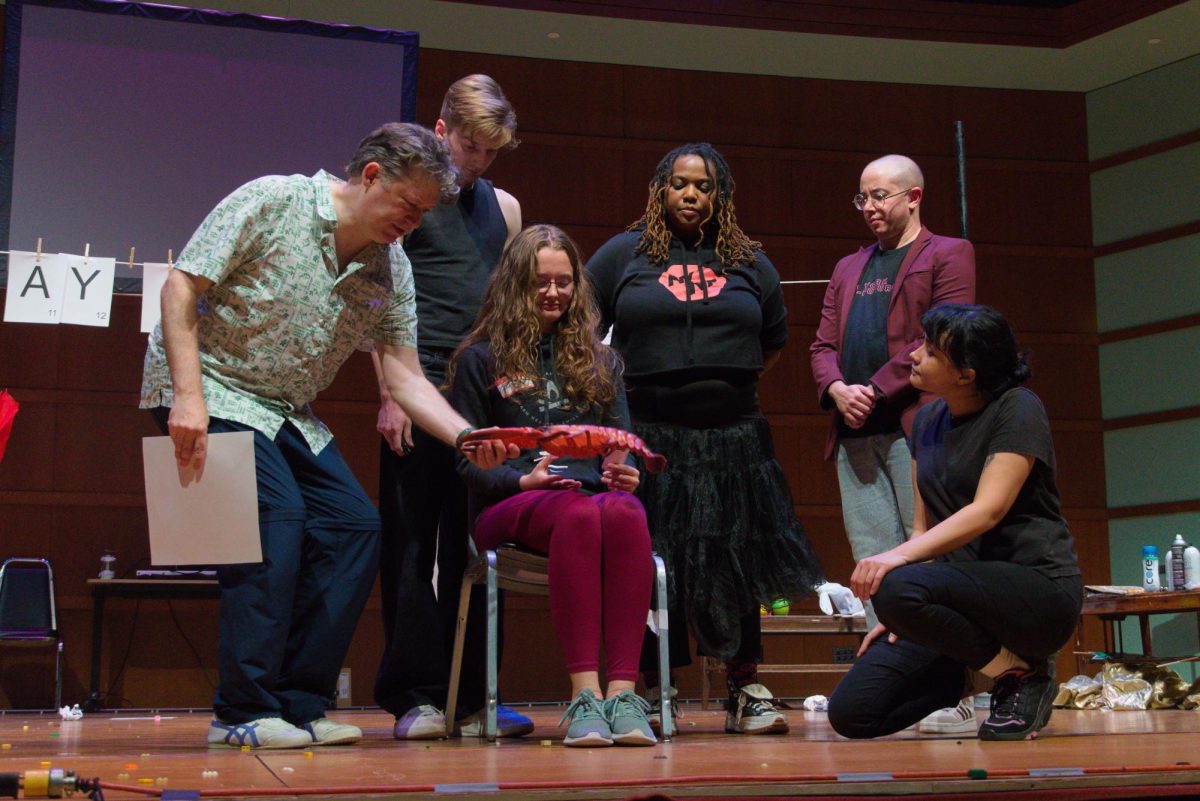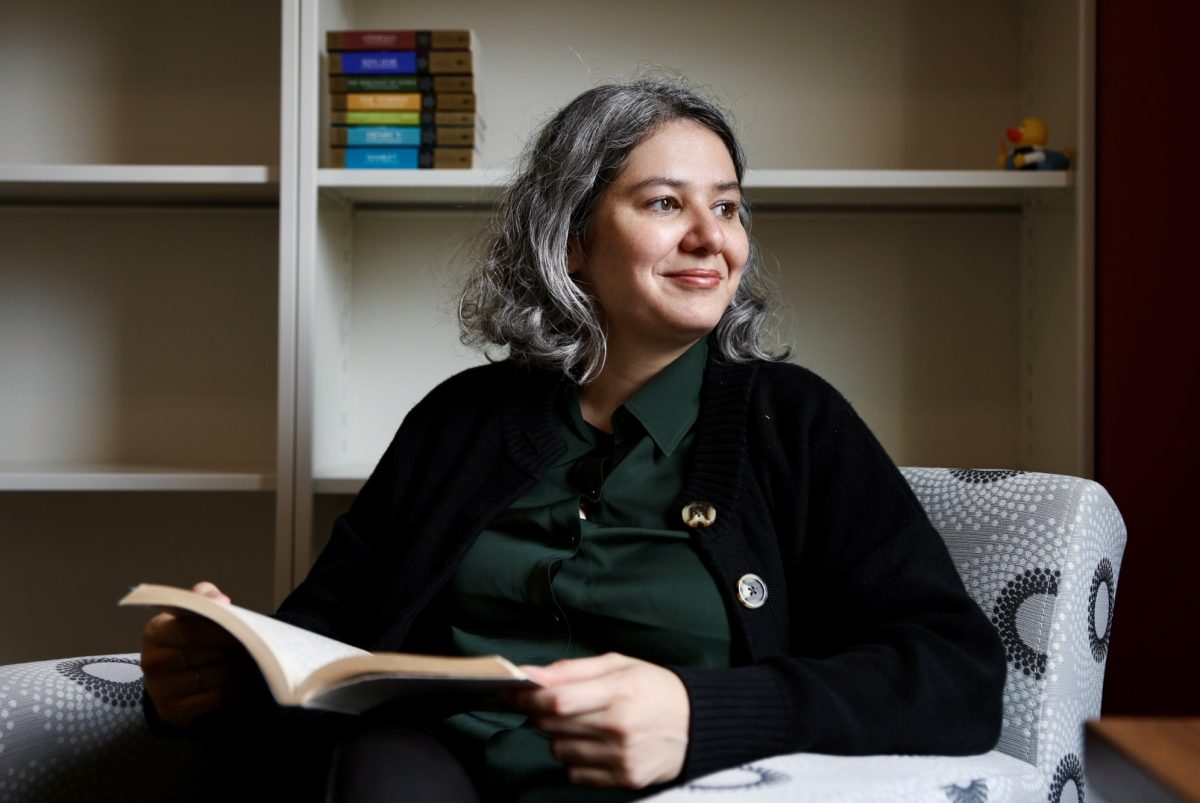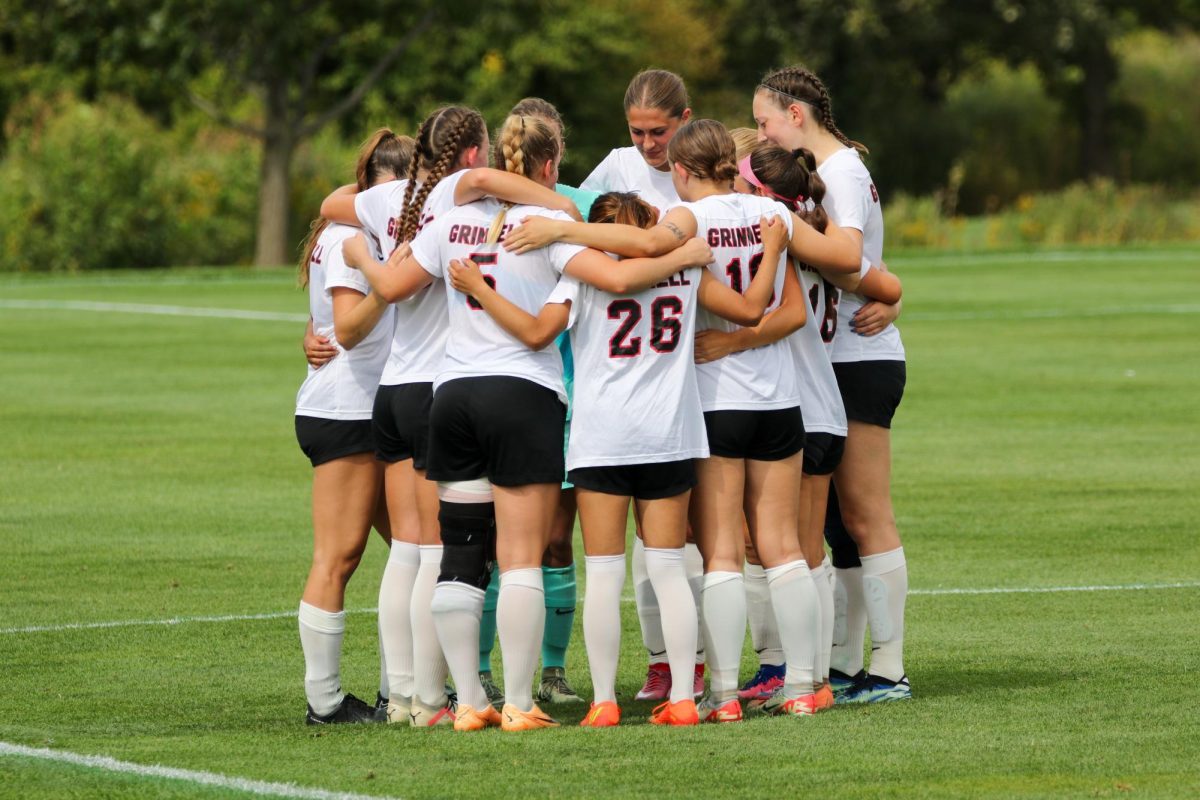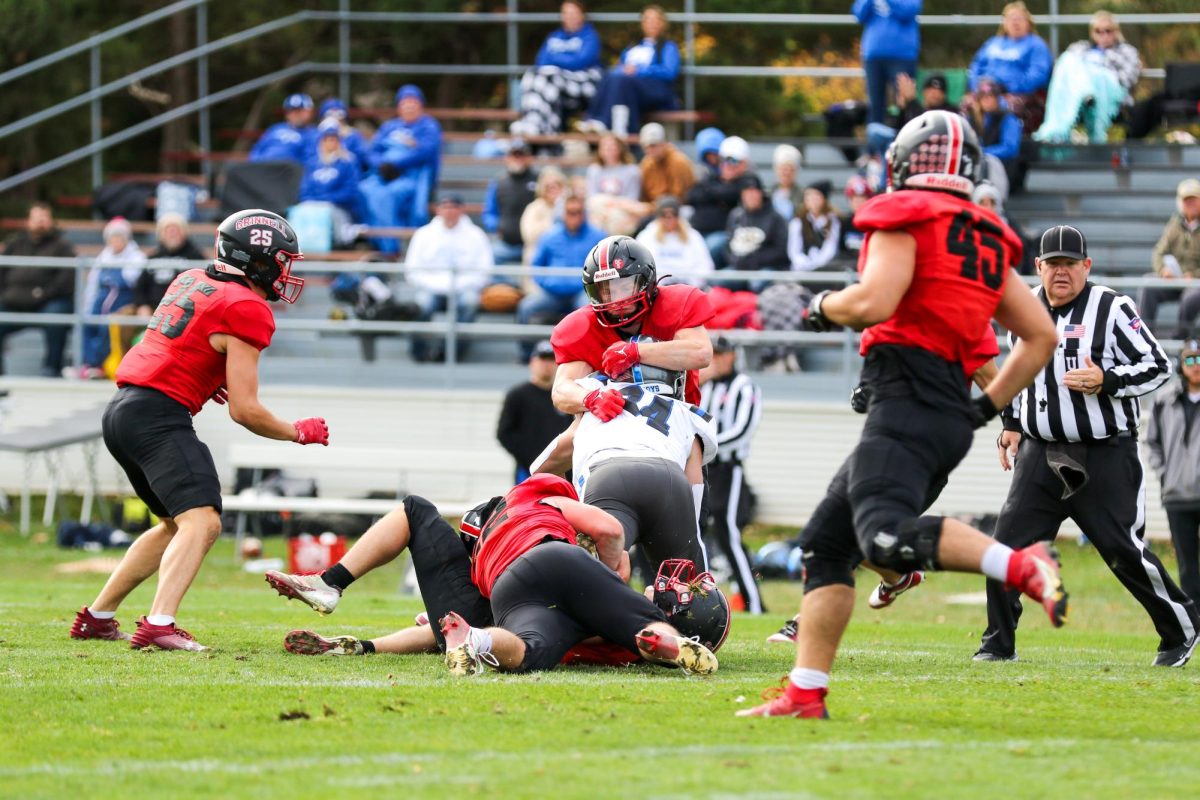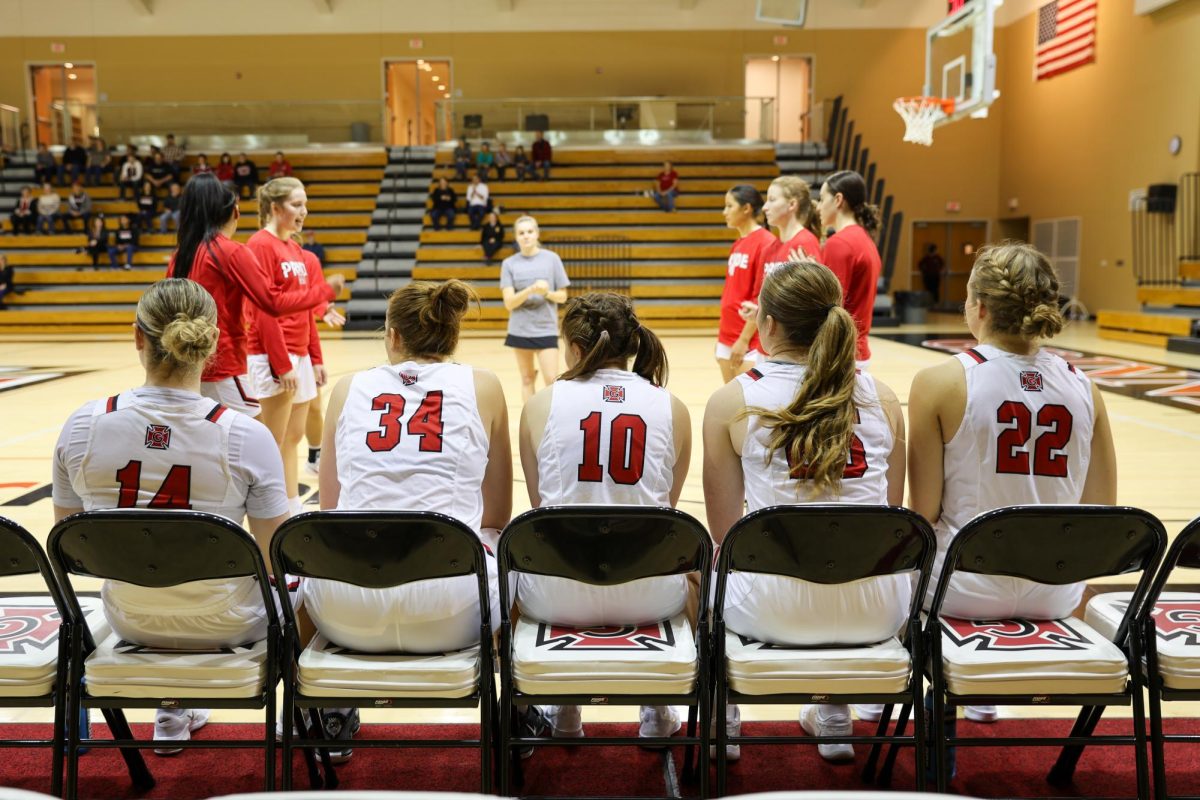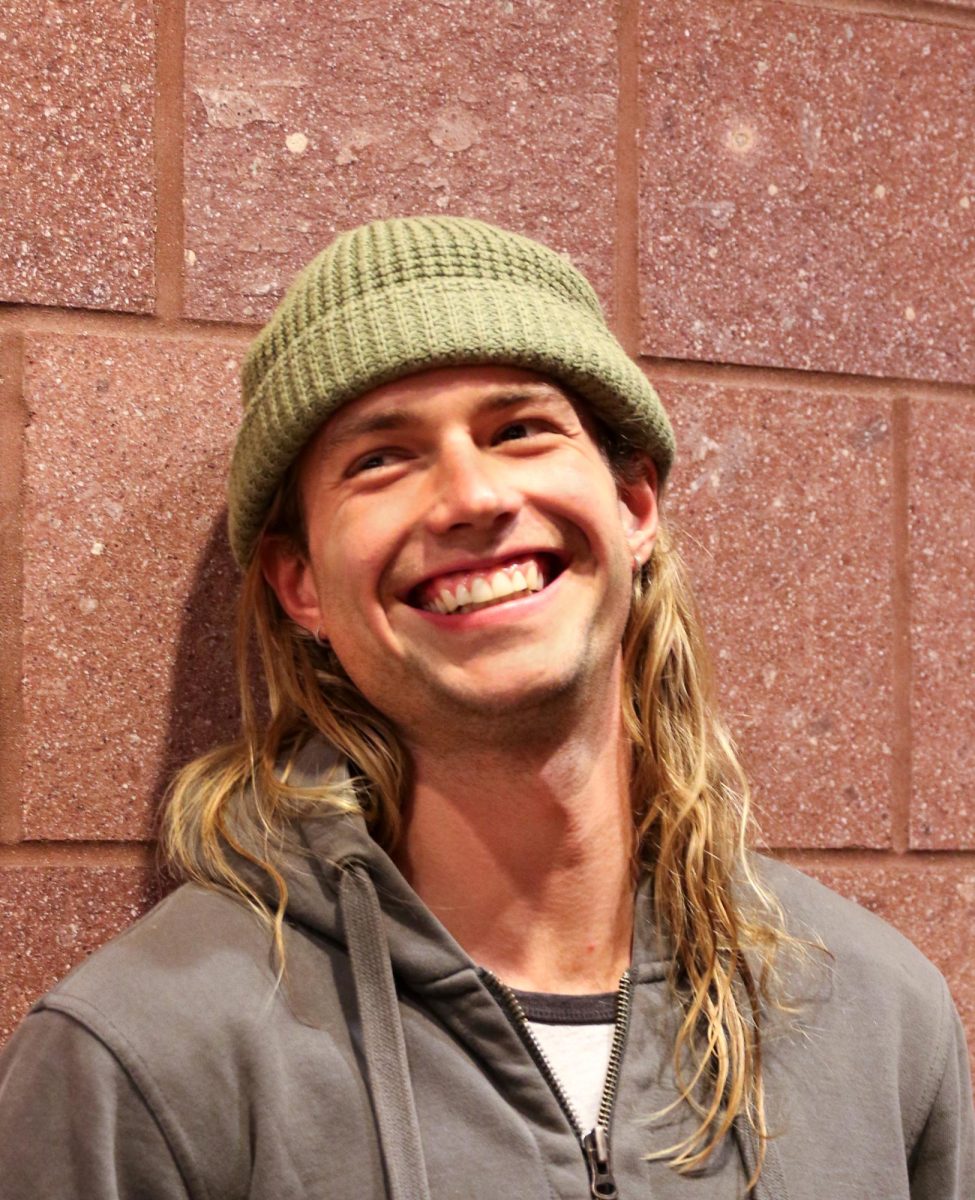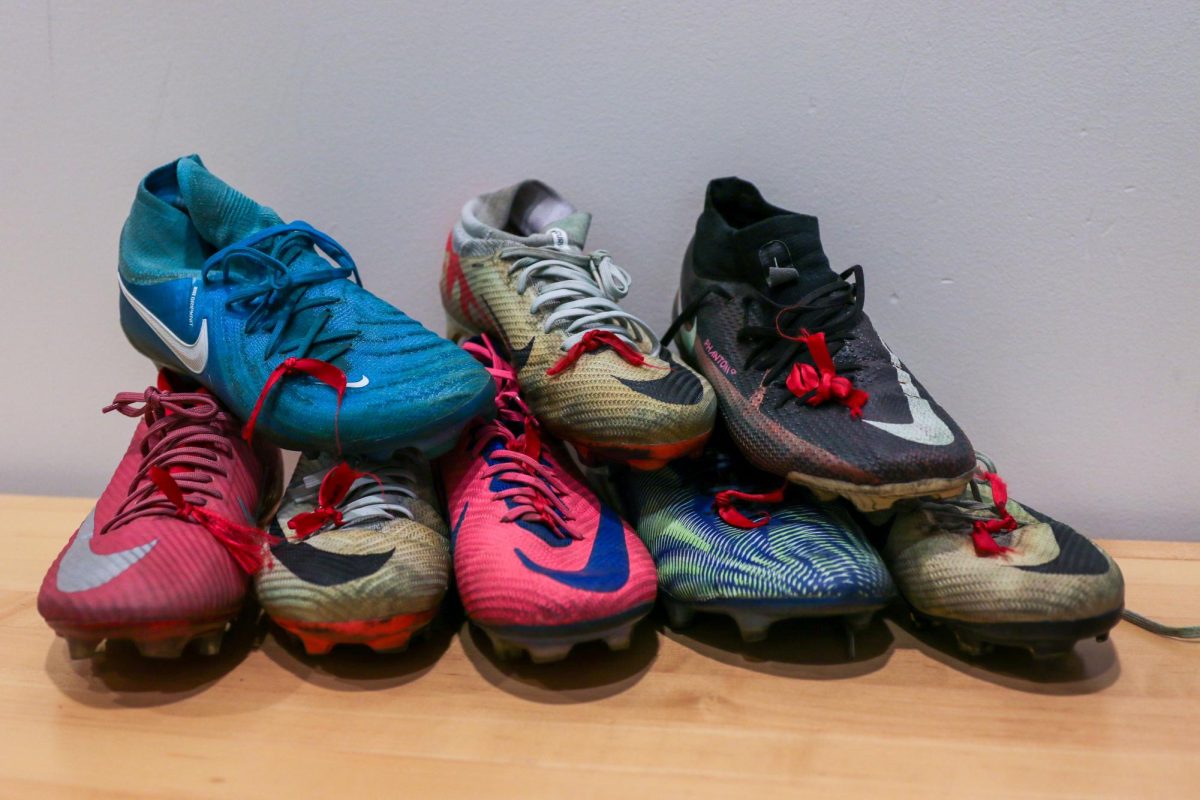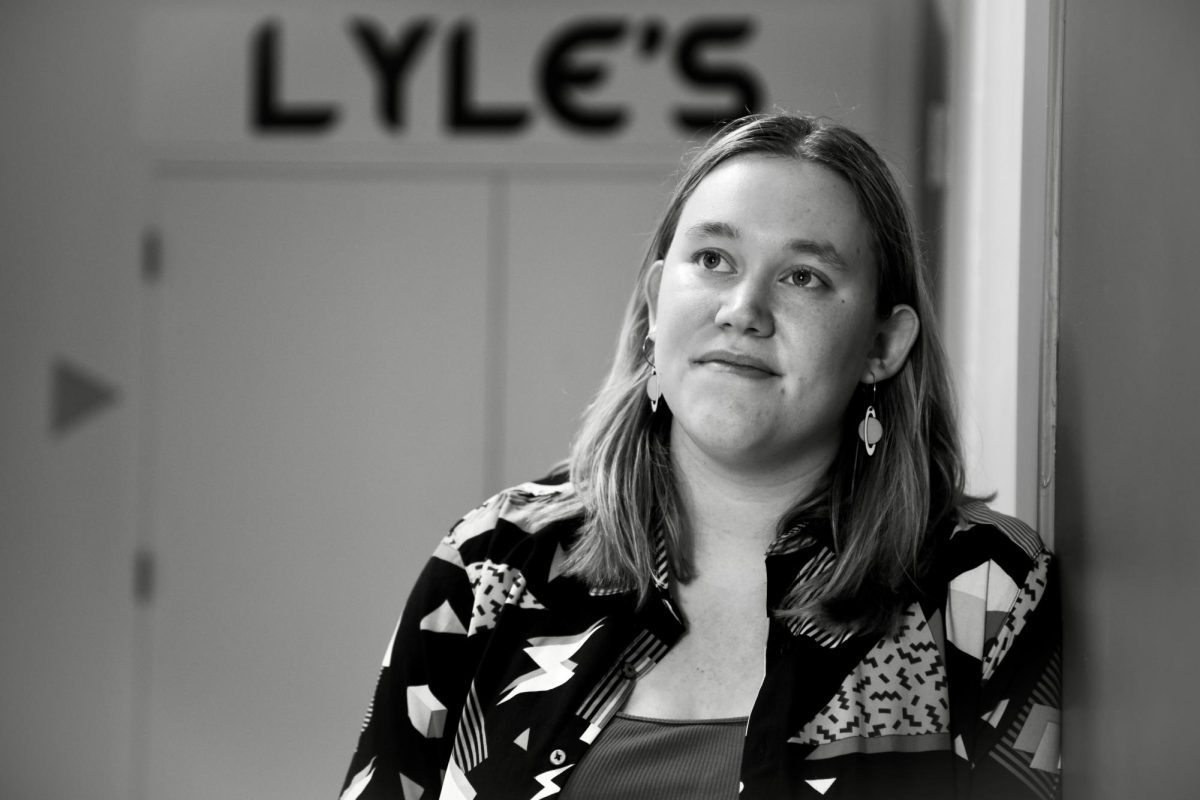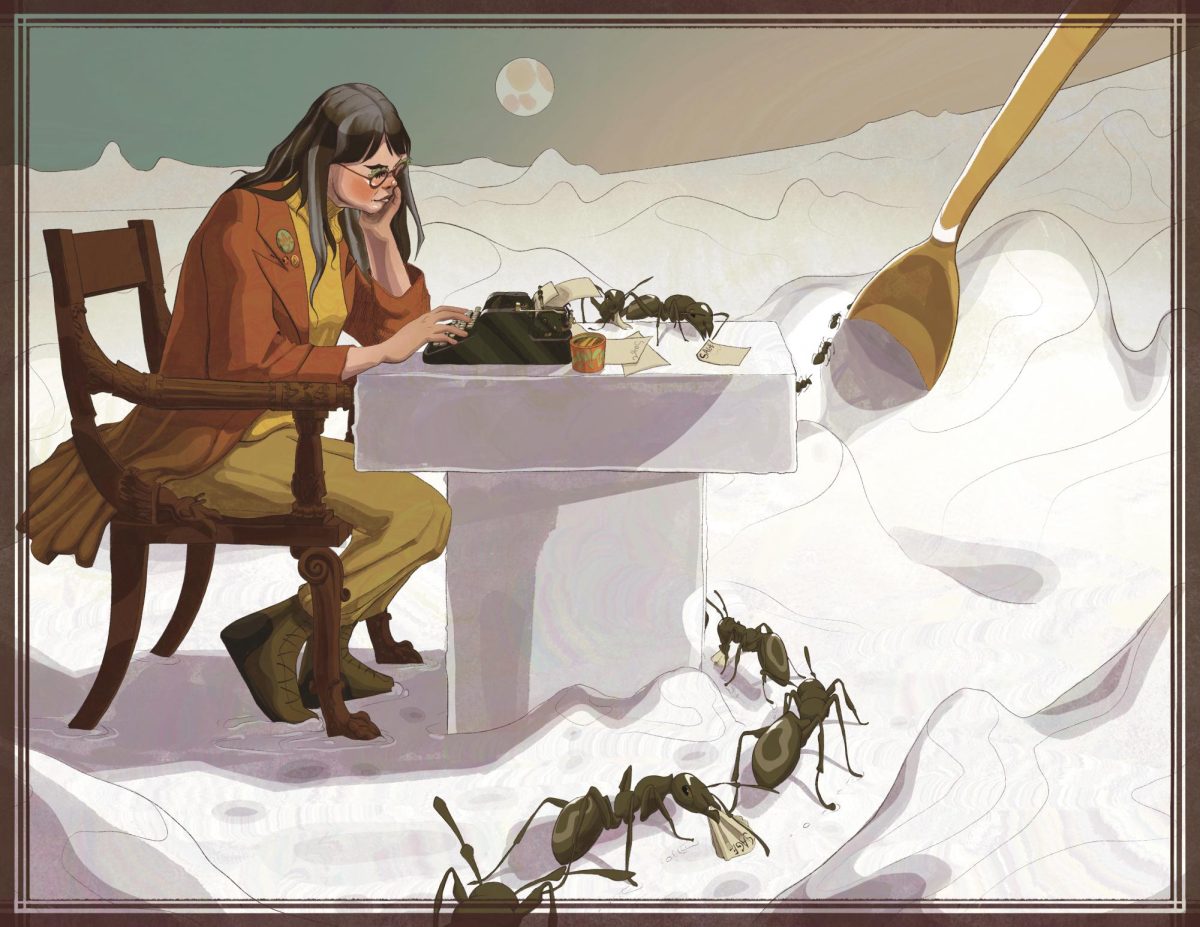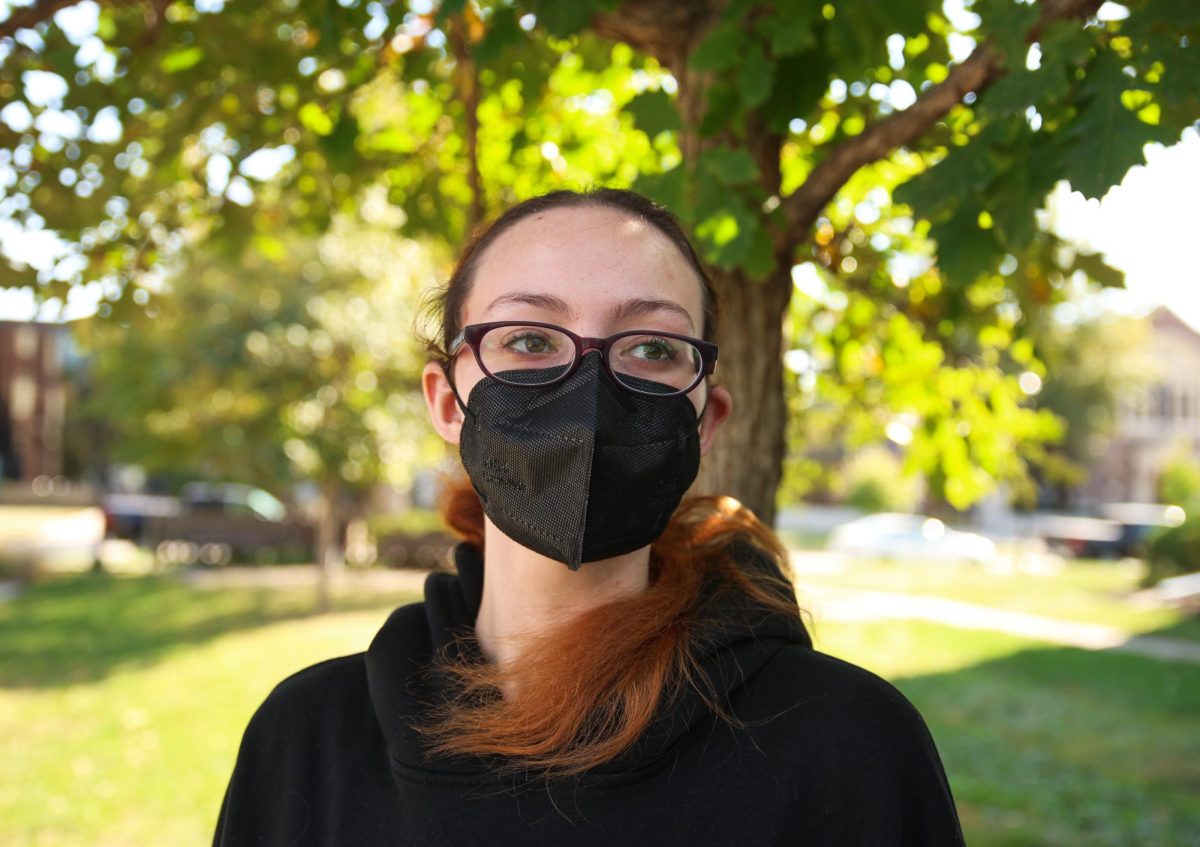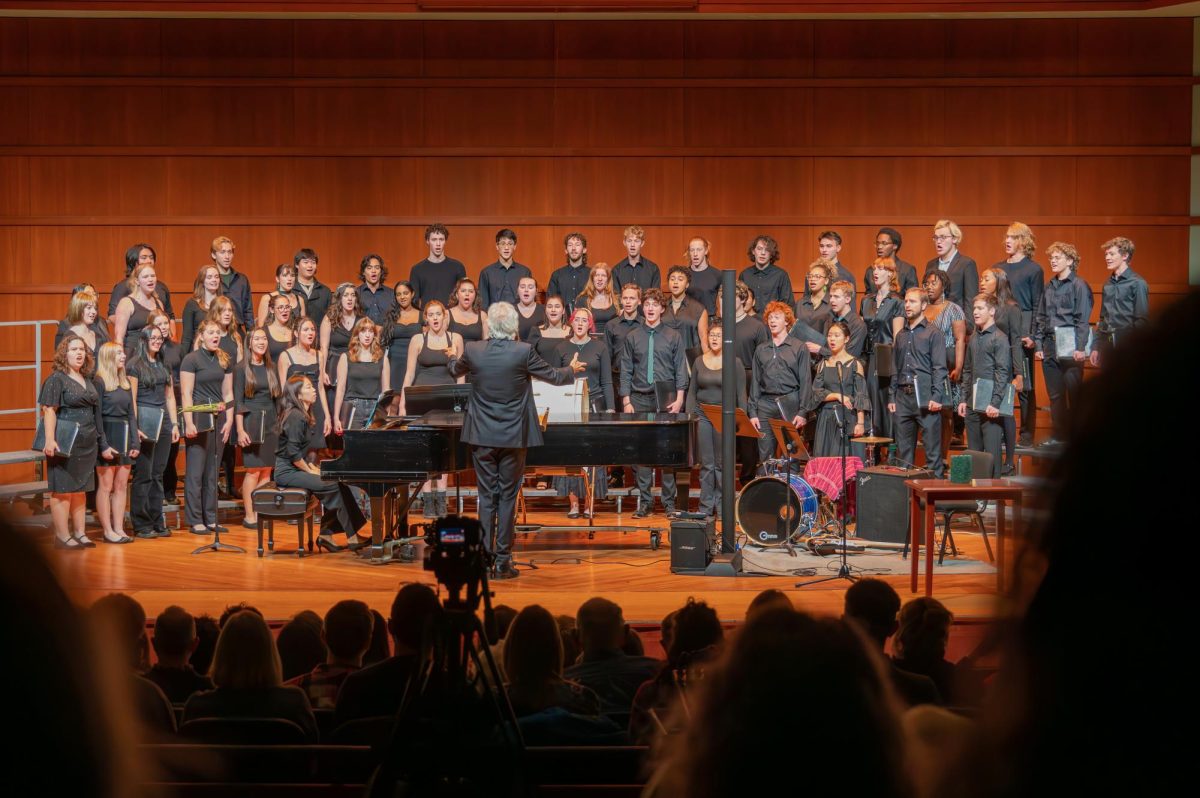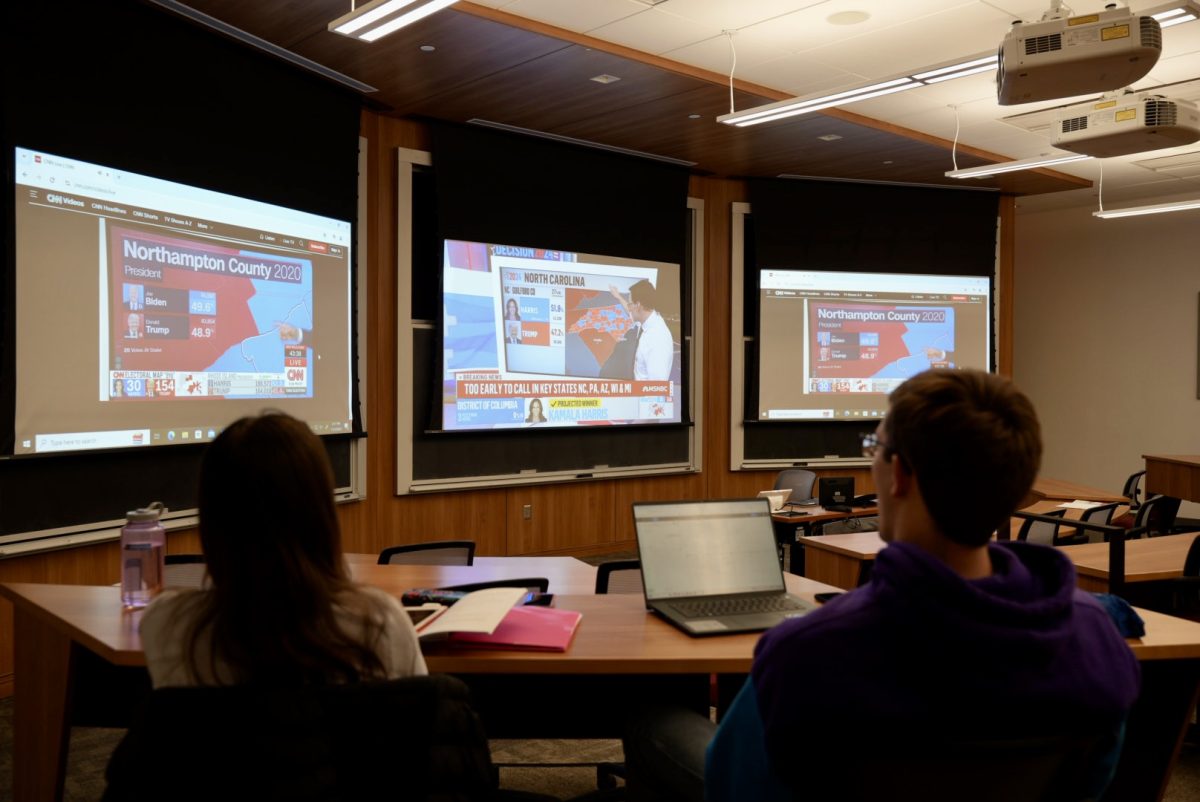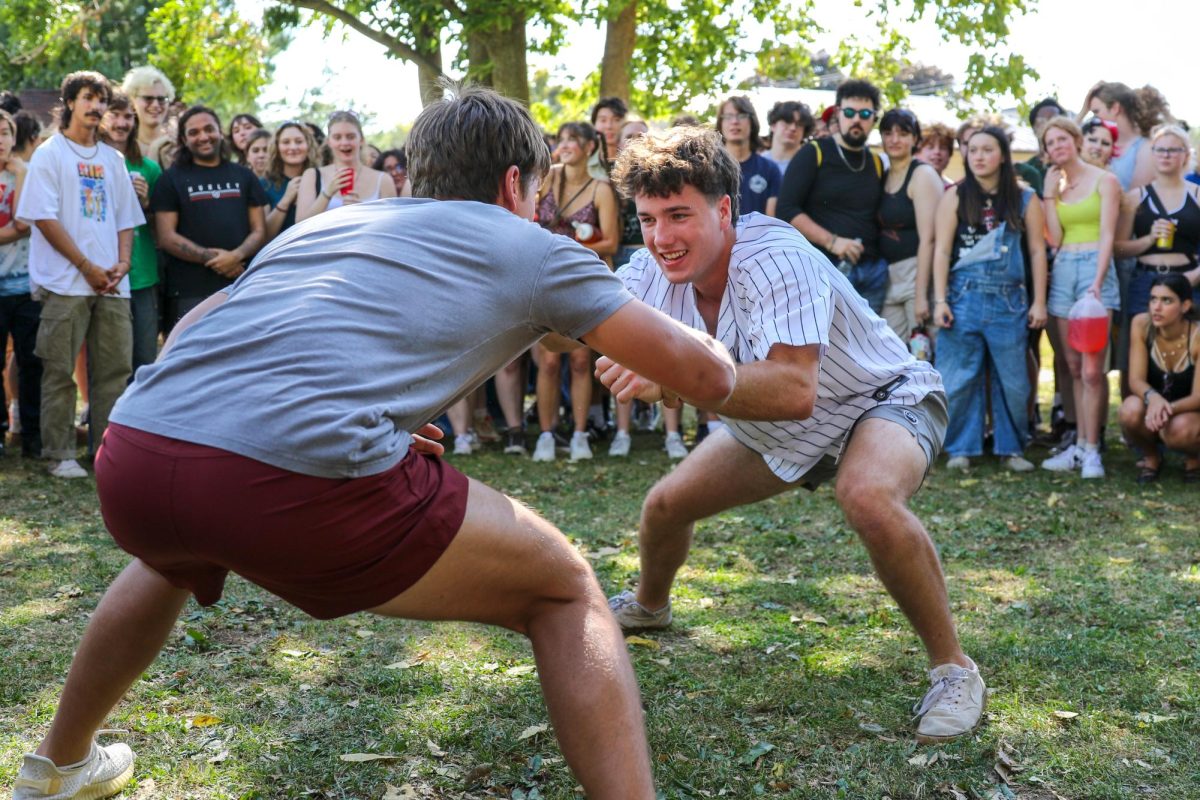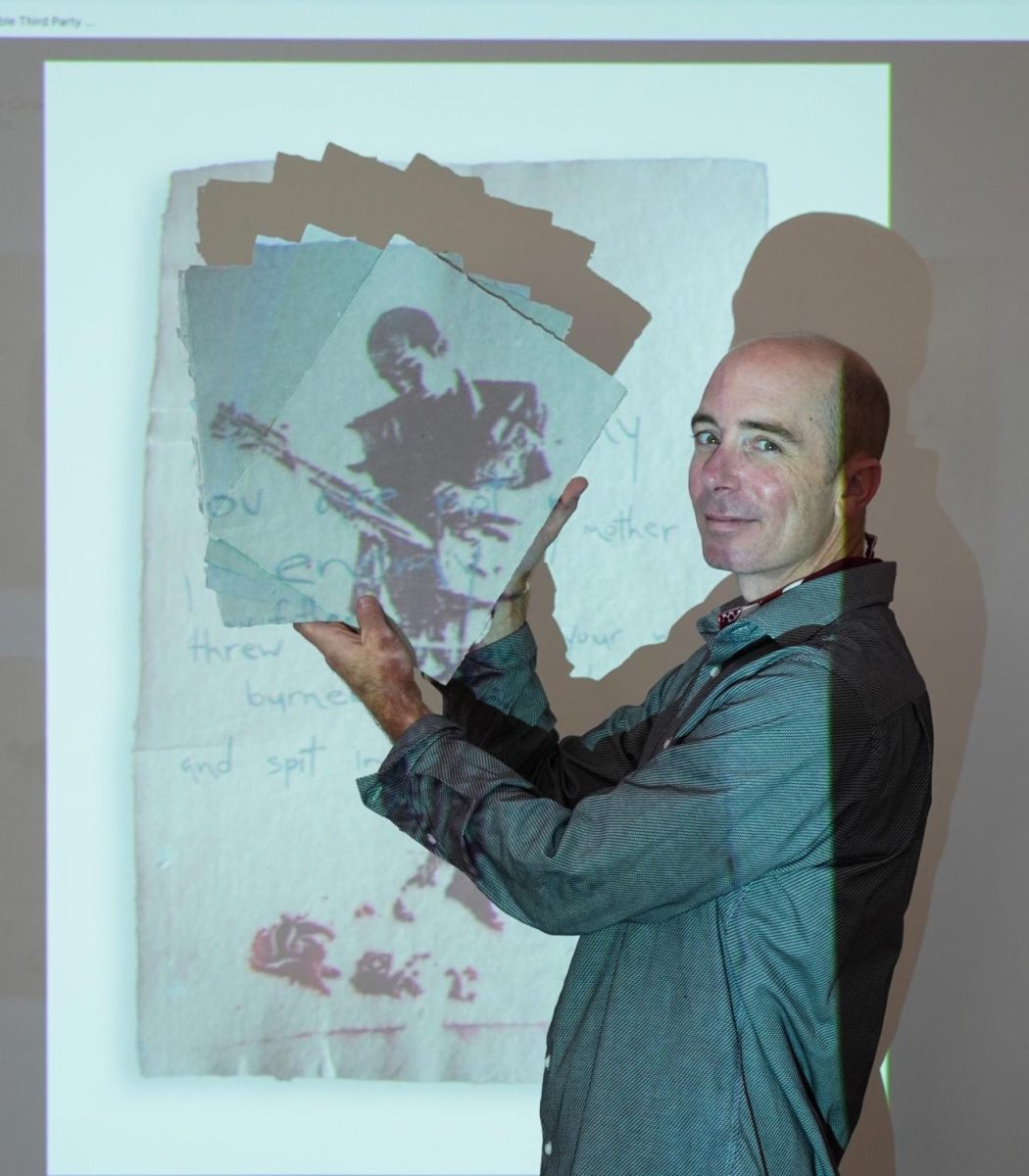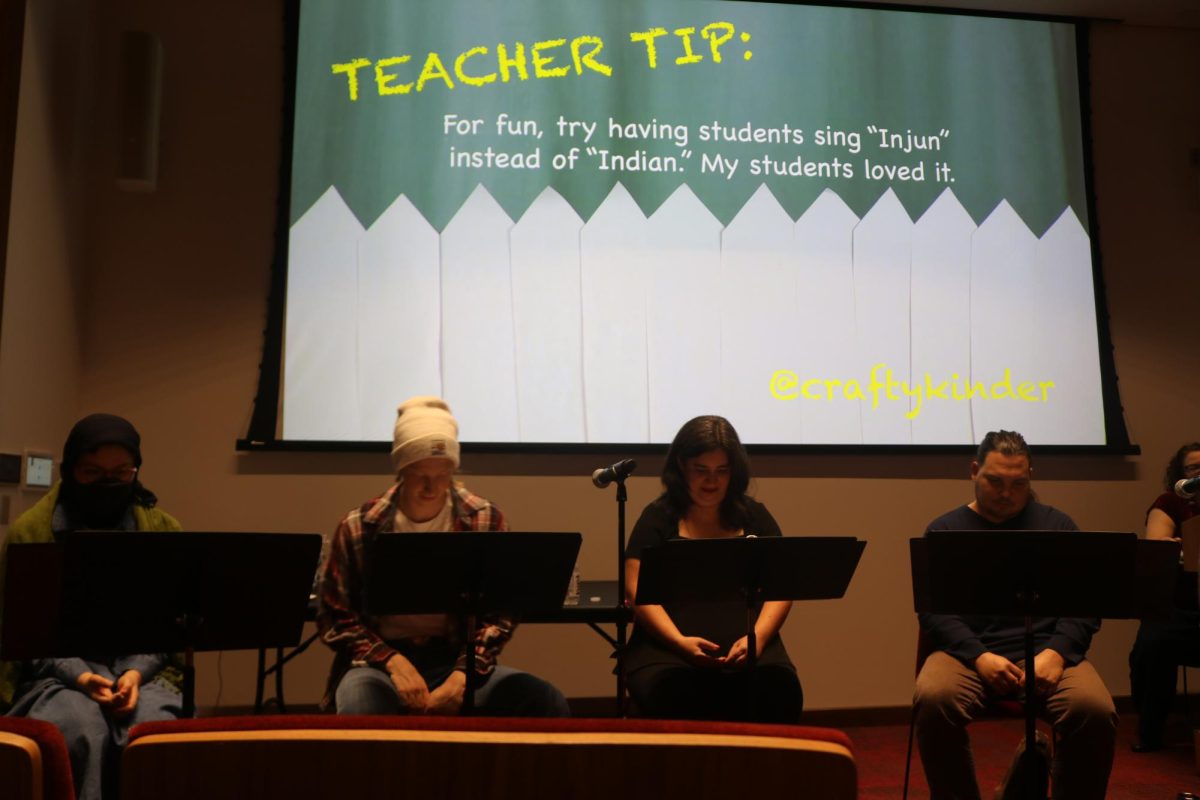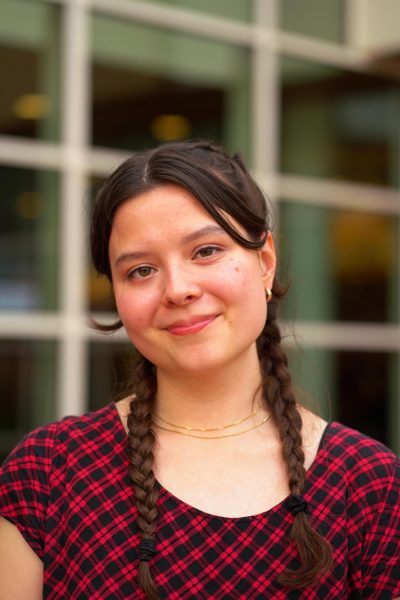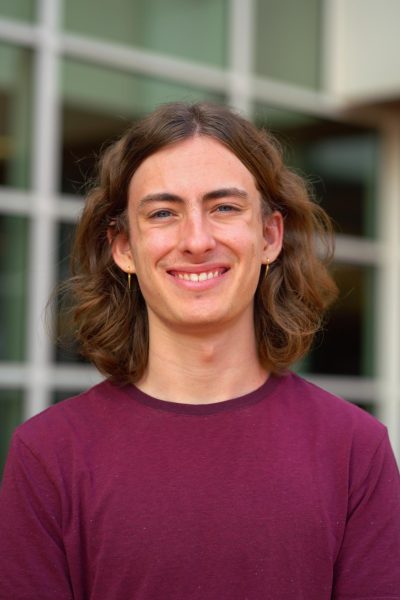During the week preceding fall break, the Grinnell College Department of Theatre, Dance, and Performance Studies hosted papermaking artist Drew Cameron for a series of events between Oct. 10 and 13.
On Tuesday, Cameron gave an artist’s talk in the Grinnell College Museum of Art (GCMoA). On Wednesday, he hosted a hands-on workshop in which he taught students how to make paper from rags. On Thursday, he led two demonstrations — one outside Bucksbaum Arts Center and one outside the Grinnell Area Arts Council. On Friday, onlookers were invited to observe as he made paper.
Cameron’s visit to Grinnell College was occasioned by the development of Assistant Professor of Theatre, Dance, and Performance Studies Jen Shook’s play “Songs of the Scarlet and Wayback,” which will premiere in March 2024. Shook, who herself trained in papermaking at the University of Iowa while obtaining a certificate of Book Arts, met Cameron at one of his papermaking workshops last summer, where they connected over their shared approach to art as community-building.
The paper which Cameron made during his recent visit to campus will be incorporated into building the set for Shook’s spring production. To obtain materials for this paper, Shook collaborated with the Grinnell Area Arts Council, which helped collect donated clothes from community members to be turned into rag pulp by Cameron. Grinnell students also donated old clothes, which will become a part of the play’s paper set.
Cameron, a veteran who served during the Iraq war, now uses traditional methods of rag papermaking to turn military uniforms into paper. Although principally a self-described “hand-papermaker,” Cameron takes a multi-disciplinary approach to his art, printing and writing on the paper he makes, collaborating with musicians and performance artists, and bringing performative elements into his own practice. He situates his work within the larger Veteran Art Movement, with which he engages by traveling across the country to teach papermaking workshops to both military and civilian participants.

During his talk at the GCMoA, Cameron explained his journey to papermaking, his background as a veteran and his approach to anti-war activism through art. He also discussed his most prominent artistic projects and collaborations, his goal of making old artistic processes relevant, and his papermaking process. This process was demonstrated in a hands-on workshop the following day at the Bucksbaum ceramics studio.
Shook, whose spring production will center around archival materials from both the college’s collection as well as those of the Drake Community Library, said she felt inspired by the symbolic potential of Cameron’s papermaking approach, “You take rags, like clothes, and you beat them down until they’re just fibers and then you remix them with water and glue them back together. And so the bits of broken thread weave back together. So I thought, that’s a good metaphor for what we’re doing.”
Shook noted how many class communities were drawn to the papermaking programming for varying reasons, noting that tutorial classes, studio art classes and English classes were all in attendance at the events. Additionally, her own THD 240, THD 350, and THD 340 students got the opportunity to be more directly involved with the devising and researching of the upcoming production through combing through archival material, interviewing community members and writing scenes inspired by their findings.
The workshop on Wednesday, Oct. 11 began with Cameron teaching students how to look for the kind of plant-based clothes that can be used for papermaking while students cut donated clothing into rags. Cameron then circulated the rags in a Hollander beater to create pulp. Students then formed two lines and began to create their own sheets of paper.
Mary Ann Schwindt `24, a student in professor Erik Simpson’s English seminar ENG 395: The History and Future of the Book, said she felt inspired by the physical focus of Cameron’s workshop: “It was wonderful. Like it was such a textile, tactile experience, and it was really insightful for a lot of my classes.”
Cameron plans to return to campus in the spring to view Shook’s production. He said that his advice to student artists and activists is to find their role through what they love. “Art is where freedom lives, so if we’re doing that, if we’re attuned to the culture, if we’re tuned into our own lives and thinking about our responsibility and relationship to the world, we can’t help but be activists, because we’re awake. We’re alive. Our eyes are open.”
